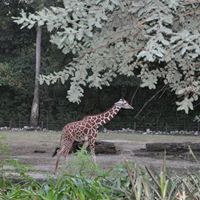Feng E Gao
age ~69
from Pearland, TX
- Also known as:
-
- Feng G Chen
- Feng G Mingang
- Phone and address:
-
2622 Oxhill Ct, Pearland, TX 77584
(281)6915519
Feng Gao Phones & Addresses
- 2622 Oxhill Ct, Pearland, TX 77584 • (281)6915519
- Galveston, TX
- College Sta, TX
- Amherst, NY
- 2622 Oxhill Ct, Pearland, TX 77584
Emails
Isbn (Books And Publications)


Zhen Shi De Mao Zedong: Mao Zedong Shen Bian Gong Zuo Ren Yuan De Hui Yi
view sourceAuthor
Feng Gao
ISBN #
7507315479
Us Patents
-
Systems And Methods For Gas Turbine Compressor Cleaning
view source -
US Patent:20180163624, Jun 14, 2018
-
Filed:Dec 13, 2016
-
Appl. No.:15/377604
-
Inventors:- Schenectady NY, US
Randall John Kleen - Houston TX, US
Harley Matthew Ross - Houston TX, US
Ely Edgardo Tejeda - Queretaro, MX
Ravishankar Bagalur Sampangiramaiah - Greenville SC, US
Susheelkumar Cherangara - Greenville SC, US
Venkata Bandaru - Greenville SC, US
Feng Gao - West Chester OH, US -
International Classification:F02C 3/30
F02C 3/04 -
Abstract:In one embodiment, a gas turbine fluid wash system includes a fluid wash system controller comprising a processor. The processor is configured to receive a cleaning fluid flow demand from a turbine system controller, wherein the turbine system controller is configured to control the turbine system to produce power. The processor is additionally configured to provide a cleaning fluid flow based on the cleaning fluid flow demand transmitted by the turbine system controller.
-
High Flow On-Line Water Wash Using Sprint Nozzle
view source -
US Patent:20170198635, Jul 13, 2017
-
Filed:Jan 7, 2016
-
Appl. No.:14/990505
-
Inventors:- Schenectady NY, US
Roman Freidl - Houston TX, US
John Harrell - Houston TX, US
Daryl Popplewell - West Chester OH, US
Feng Gao - West Chester OH, US
Harley Matthew Ross - Houston TX, US -
International Classification:F02C 7/143
F02C 3/30
F02C 3/04 -
Abstract:A combined water-wash and water injection cooling system for a gas turbine engine including a water delivery system, an air delivery system, and a controller configured to couple to the gas turbine engine, the water delivery system, and the air delivery system to access and execute one or more routines. The water delivery system includes one or more spray nozzles to spray water upstream and directly in front of a compressor of the gas turbine engine. The air delivery system is configured to provide air from the compressor to the water delivery system so that the one or more spray nozzles spray atomized water into the compressor of the gas turbine engine during a cooling mode to cool the compressor. During an on-line water wash mode, air from the air delivery system to the water delivery system is turned off to enable the one or more spray nozzles to spray non-atomized water into the compressor of the gas turbine engine to wash the compressor.
Resumes

Feng Gao
view sourceLocation:
United States

Feng Gao
view sourceLocation:
United States

Feng Gao
view sourceLocation:
United States

Assistant Professor At University Of Illinois At Chicago
view sourceLocation:
Chicago, Illinois
Industry:
Accounting

Software Architect At Ge Healthcare
view sourcePosition:
Software Architect at GE Healthcare
Location:
Waukesha, Wisconsin
Industry:
Medical Devices
Work:
GE Healthcare since Jan 2005
Software Architect
Software Architect
Education:
Tsinghua University
Ph.D., Electrical, Electronics and Communications Engineering
Ph.D., Electrical, Electronics and Communications Engineering

Feng Gao
view sourceLocation:
United States

Feng Gao
view sourceLocation:
United States
Name / Title
Company / Classification
Phones & Addresses
Director
Gao Feng Remodeling Inc
Single-Family House Construction · Single-Family Housing Construction, Nsk
Single-Family House Construction · Single-Family Housing Construction, Nsk
7939 Dairy Vw Ln, Houston, TX 77072
Director
MICROANALYSIS, INC
Nonclassifiable Establishments
Nonclassifiable Establishments
2622 Oxhill Ct, Pearland, TX 77584
Family And General Dentistry, President, Principal
Gao, Feng & Co PA
Dentist's Office
Dentist's Office
9110 Bellaire Blvd, Houston, TX 77036
DirectorPresident
FENG GAO & CO., PA
9110 Bellaire Blvd STE P, Houston, TX 77036
P
FEN GAO & CO & INC
9110 Bellaire Blvd STE P, Houston, TX 77036
Vehicle Records
-
Feng Gao
view source -
Address:2622 Oxhill Ct, Pearland, TX 77584
-
Phone:(281)4120861
-
VIN:JTNBE46K473068607
-
Make:TOYOTA
-
Model:CAMRY
-
Year:2007
-
Feng Gao
view source -
Address:2622 Oxhill Ct, Pearland, TX 77584
-
VIN:3HGCM56447G701253
-
Make:HONDA
-
Model:ACCORD
-
Year:2007
Googleplus

Feng Gao
About:
日久見人心 ^^
Bragging Rights:
中華足球奧運培訓隊^^

Feng Gao
Work:
Fujitsu
Sangfor
Sangfor
Education:
NEU - Software college

Feng Gao
Education:
University of California, Berkeley, Sun Yat-sen University
About:
I feel good just to keep my blogs up-to-date.

Feng Gao
Work:
YiLongFeng Tech.Co.,Ltd - President
Education:
University College London

Feng Gao
About:
糕盼的平方

Feng Gao
Education:
Peking University

Feng Gao
Education:
University College of Gävle

Feng Gao
About:
中指劳损者
Flickr
Classmates

Feng Gao
view sourceSchools:
Jinan University Guangzhou China 1967-1971

Feng Gao
view sourceSchools:
Windsor School Flushing NY 2001-2005
Community:
Bruce Eder, Jean Sobolow, Linda Comac, David Federbush

Feng Gao, Hopi High Schoo...
view source
Jinan University, Guangzhou
view sourceGraduates:
Feng Gao (1967-1971),
Mumian Gao (1983-1987),
Zhuoying Peng (1992-1996),
Chau Chuen Yan (1994-1998)
Mumian Gao (1983-1987),
Zhuoying Peng (1992-1996),
Chau Chuen Yan (1994-1998)

Hopi High School, Keams c...
view sourceGraduates:
Feng Gao (1993-1997),
Dorcia Chee (1995-1999),
Collin Campus (1996-2000),
Ema Mae Thompson (2003-2007),
Alysia Kewanyama (2006-2010)
Dorcia Chee (1995-1999),
Collin Campus (1996-2000),
Ema Mae Thompson (2003-2007),
Alysia Kewanyama (2006-2010)

Windsor School, Flushing,...
view sourceGraduates:
Marleyne Massen (1969-1973),
Allen Alvir (1991-1995),
Feng Gao (2001-2005),
Anthony Valentino (1979-1983)
Allen Alvir (1991-1995),
Feng Gao (2001-2005),
Anthony Valentino (1979-1983)

Hartford Central School, ...
view sourceGraduates:
Gao Feng (1996-2000),
Brandi Andrews (1986-1990),
April Jordan (1990-1993),
David Harringotn (1970-1978)
Brandi Andrews (1986-1990),
April Jordan (1990-1993),
David Harringotn (1970-1978)
News

NIH-halted study unveils its massive analysis of bat coronaviruses
view source- Duke Universitys Feng Gao, who led an analysis published on 29 May in Science about the evolution of SARS-CoV-2, says the new work by Daszak, Shi, and colleagues underscores that researchers have just sampled the tip of the iceberg of the coronaviruses circulating between bats that could jump int
- Date: Jun 01, 2020
- Category: Health
- Source: Google

Evolution of pandemic coronavirus outlines path from animals to humans
view source- "Very much like the original SARS that jumped from bats to civets, or MERS that went from bats to dromedary camels, and then to humans, the progenitor of this pandemic coronavirus underwent evolutionary changes in its genetic material that enabled it to eventually infect humans," said Feng Gao, M.D.
- Date: May 29, 2020
- Category: Health
- Source: Google

Feng Gao
view source
Feng Gao
view source
Xiao Feng Gao
view source
Feng Gao
view source
Feng Gao
view source
Feng Gao
view source
Feng Gao Hg
view source
Feng Gao
view sourceYoutube
Plaxo

Feng Gao
view sourceFeng 素質
Myspace
Get Report for Feng E Gao from Pearland, TX, age ~69











![(Rang Feng Gao Su Ni) [Let The Wind Tell You] - Ge... (Rang Feng Gao Su Ni) [Let The Wind Tell You] - Ge...](https://i.ytimg.com/vi/Bb0pN30qoyU/hqdefault.jpg?sqp=-oaymwE2COADEI4CSFXyq4qpAygIARUAAIhCGAFwAcABBvABAfgB_gmAAtAFigIMCAAQARgPIGQoZTAP&rs=AOn4CLBB0nWsQ-2jNqcXa2kIG2cJDf7URw)


